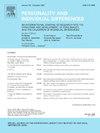有胆就靠近点通过对积极和消极刺激的行为反应验证修订后的强化敏感性理论
IF 3.5
2区 心理学
Q1 PSYCHOLOGY, SOCIAL
引用次数: 0
摘要
经修订的强化敏感性理论(rRST)是一种颇具影响力的人格理论,它为接近倾向和回避倾向的差异提供了解释。在本研究中,我们的目的是在人类实验环境中检验强化敏感性理论的假设,该理论最初是通过动物模型提出的。因此,我们设计了一个范例,让 N = 65 名健康参与者面对正面和负面图像,通过人脸识别软件测量他们与电脑屏幕距离的无意识变化。相对于那些对 "战斗-飞行-冷冻 "系统(FFFS)不太敏感的人,那些对 "战斗-飞行-冷冻 "系统(FFFS:构成恐惧,调节回避)比较敏感的人对负面图像的距离感要强于对正面图像的距离感。行为抑制系统(BIS;构成焦虑)对距离变化没有调节作用,这表明恐惧和焦虑的基础系统具有不同的调节功能。关于行为接近系统(BAS;调节接近),虽然假设对积极刺激的接近依赖于行为接近系统,但也没有观察到任何影响。不过,图片的价值存在主效应,表明更积极的刺激会拉近距离。总之,我们的数据为 rRST 的有效性提供了进一步的证据,它使用与显示器距离的变化来刺激接近和回避行为的操作化。本文章由计算机程序翻译,如有差异,请以英文原文为准。
Come closer if you dare: A validation of the revised Reinforcement Sensitivity Theory by behavioral responses to positive and negative stimuli
The revised Reinforcement Sensitivity Theory (rRST) is an influential personality theory that provides explanations for differences in approach and avoidance tendencies. In this study, we aim to test assumptions of the rRST, originally developed using animal models, in an experimental setting with humans. Therefore, we designed a paradigm in which N = 65 healthy participants are confronted with positive and negative images to measure their unconscious change in distance to the computer screen by means of a face recognition software. Persons with a more sensitive fight-flight-freezing system (FFFS; constituting fear, regulating avoidance) showed stronger distancing from negative images relative to positive images than people with a less sensitive FFFS. The behavioral inhibition system (BIS; constituting anxiety) showed no moderation on distance change, indicating that the systems underlying fear and anxiety adopt different regulatory functions. Concerning the behavioral approach system (BAS; regulating approach), also no effects were observed, although a BAS-dependent approach to positive stimuli was hypothesized. However, there was a main effect of picture valence, indicating closer distances for more positive stimuli. Overall, our data provide further evidence for the validity of the rRST, using the change in distance to the monitor as exciting operationalization of approach and avoidance behavior.
求助全文
通过发布文献求助,成功后即可免费获取论文全文。
去求助
来源期刊

Personality and Individual Differences
PSYCHOLOGY, SOCIAL-
CiteScore
8.50
自引率
4.70%
发文量
577
审稿时长
41 days
期刊介绍:
Personality and Individual Differences is devoted to the publication of articles (experimental, theoretical, review) which aim to integrate as far as possible the major factors of personality with empirical paradigms from experimental, physiological, animal, clinical, educational, criminological or industrial psychology or to seek an explanation for the causes and major determinants of individual differences in concepts derived from these disciplines. The editors are concerned with both genetic and environmental causes, and they are particularly interested in possible interaction effects.
 求助内容:
求助内容: 应助结果提醒方式:
应助结果提醒方式:


